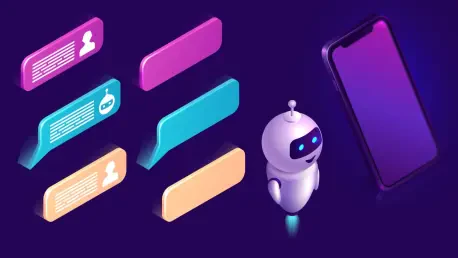In a world where mental health struggles touch countless lives, with roughly one in five Australians grappling with a mental health condition each year, the search for accessible support has led many to artificial intelligence chatbots like ChatGPT, Claude, and Replika. These digital tools promise instant, cost-free assistance, stepping in where traditional therapy often falls short due to high costs, lengthy wait times, and a scarcity of trained professionals. The question looms large: can these AI-driven companions truly take the place of a human therapist in providing safe and effective care? As technology advances at a breakneck pace, it brings both potential solutions and significant uncertainties to the mental health landscape. This exploration delves into the appeal of AI chatbots as a support mechanism, weighing their benefits against the risks they pose. It’s a critical moment to assess whether these tools can deliver the depth and nuance required for meaningful psychological support or if they merely offer a fleeting sense of relief.
Breaking Barriers with Accessibility
The standout feature of AI chatbots in mental health support is their ability to be available at any time, day or night, without the financial burden often associated with professional therapy. For individuals who might wait weeks or even months to secure an appointment with a therapist, this immediacy can feel like a lifeline. Whether someone needs a quick way to manage stress, a space to express frustrations, or basic coping strategies, chatbots provide responses in real time. This is particularly impactful in regions or communities where mental health services are scarce, offering a bridge over the gap that traditional systems struggle to close. The 24/7 nature of these tools ensures that help is just a few taps away, which can be invaluable for those in urgent need of a sounding board.
Beyond sheer availability, AI chatbots also play a role in democratizing mental health education and self-help resources. Users can gain insights into their conditions, explore mindfulness practices, or develop greater self-awareness through guided interactions. These tools often present information in a digestible format, empowering individuals to take initial steps toward understanding their emotional challenges. While this access to knowledge and support is a significant advantage, it raises questions about the depth and accuracy of the guidance provided. Accessibility alone cannot guarantee the quality or safety of the intervention, especially when compared to the structured, evidence-based approaches of trained professionals.
The Emotional Pull of Digital Empathy
A compelling aspect of AI chatbots is their ability to simulate empathy through carefully crafted conversational tones, often making users feel understood and supported. For many, the fear of judgment or stigma prevents open discussions about personal struggles with a human therapist, but a chatbot offers a seemingly safe, neutral space to share. This perceived emotional connection can be particularly comforting for those who feel isolated or hesitant to seek help through conventional means. The absence of human bias or reaction in these interactions fosters a sense of security, allowing users to express thoughts they might otherwise keep hidden, which can be a small but meaningful step toward addressing mental health concerns.
However, this sense of empathy, while soothing, is ultimately artificial and lacks the genuine understanding a human therapist brings to the table. The algorithms behind these chatbots are designed to mimic compassionate responses, but they cannot truly grasp the complexities of human emotion or context. This limitation means that while users might feel heard in the moment, the depth of support remains surface-level, missing the tailored insights and emotional intelligence that define effective therapy. Relying on a digital tool for such personal matters can create a false sense of resolution, potentially delaying the pursuit of more substantial, professional help that addresses root causes rather than just symptoms.
Hidden Dangers in AI-Driven Support
Despite the appeal of AI chatbots, significant risks emerge when considering their use as a substitute for traditional therapy, particularly with general-purpose tools not built for mental health purposes. Platforms like ChatGPT, while impressive in their conversational abilities, often lack the specialized design and evidence-based frameworks found in dedicated mental health apps like Wysa or Woebot. This can lead to a phenomenon known as “hallucination,” where the AI generates advice that sounds plausible but is inaccurate or even harmful. Without grounding in psychological principles, such responses can mislead users, offering solutions that fail to align with their actual needs or circumstances, potentially exacerbating existing issues.
Even more concerning is the inability of these chatbots to manage crises or support individuals with severe mental health conditions. Unlike trained therapists who can assess risk and provide nuanced interventions, AI tools are not equipped to handle emergencies involving suicidality, delusional thoughts, or other critical states. There’s a real danger that they might reinforce negative patterns or beliefs instead of challenging them, delaying access to vital professional care. Historical cases, such as a chatbot being discontinued for dispensing harmful advice, underscore that even purpose-built AI tools can falter. This highlights a fundamental gap: the lack of contextual awareness and crisis management skills that are indispensable in therapeutic settings.
Navigating Privacy and Ethical Challenges
Another pressing issue with AI chatbots in mental health contexts is the handling of highly sensitive personal data, often without clear safeguards. Unlike human therapists who are bound by strict confidentiality codes and local regulations, many chatbots are developed by entities outside jurisdictions like Australia, raising questions about data security. Users share deeply personal information, yet there’s little assurance that this data won’t be misused or exposed. The absence of standardized ethical guidelines for AI in mental health support creates a vulnerability that traditional therapy avoids through professional accountability and legal protections, leaving users at risk in ways they may not fully comprehend.
Compounding this concern is the lack of oversight to address adverse outcomes when things go wrong during interactions with AI tools. There’s no established mechanism to monitor the quality of advice given or to ensure accountability for potential harm caused by inaccurate or inappropriate responses. This ethical void stands in stark contrast to the rigorous standards governing human therapists, who are trained to prioritize patient well-being above all else. As reliance on chatbots grows, the need for robust policies to protect user privacy and ensure ethical use becomes increasingly urgent, lest these tools undermine the very trust they aim to build among those seeking help.
Charting a Safe Path Forward
Reflecting on the rise of AI chatbots in mental health support, it becomes evident that while these tools offer remarkable accessibility and a semblance of emotional connection, they fall short of replacing trained therapists. Their limitations in handling crises, providing accurate guidance, and safeguarding privacy underscore significant risks that cannot be ignored. Past discussions among experts reveal a consensus that unchecked reliance on such technology often leads to delayed professional intervention, sometimes with serious consequences for users who need more than digital responses can provide.
Looking ahead, the focus must shift toward integrating AI chatbots as supplementary resources within a regulated mental health framework, rather than standalone solutions. Developing evidence-based guidelines, enhancing AI literacy among both professionals and the public, and establishing strict privacy protections stand as critical next steps. Collaboration between clinicians, policymakers, and technologists is essential to ensure these tools complement human care, maximizing their benefits while minimizing harm. Only through such deliberate efforts can the mental health community harness the potential of AI safely and effectively for those in need.









